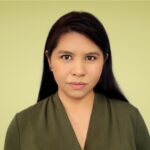Better News, powered by the American Press Institute (API), is designed to serve three purposes:
- Collect, curate and operate as a central repository of best practices in the craft of journalism and the challenge of journalism sustainability.
- Provide strategic guidance on the most important issues facing news organizations, particularly local, regional and metropolitan newspapers.
- Share important lessons from participants of the Table Stakes Local News Transformation Program.
Better News is a project of API and The Knight-Lenfest Local News Transformation Fund, a joint initiative of the John S. and James L. Knight Foundation and The Lenfest Institute for Journalism.
Table Stakes
The Table Stakes Local News Transformation Program was built on the concept of “table stakes” — a term derived from poker (that is, what is required to have a seat at the table). For news organizations, the question is: What do you have to do to survive and thrive — to “get in the game”?
Better News documents and shares best practices from the Table Stakes initiative so news innovators across the country can find the guidance they need.
[Learn More about the seven “Table Stakes”]
Learn, Plan and Do
Our work aims to define the distinction between vision, strategy and tactics.
Our resources on each topic are therefore organized by three stages: Learn (vision), Plan (strategy) and Do (tactics).
- “Learn” is a short primer that answers the basics: What do you need to know before getting started? What are the big-picture issues to consider? Why does this topic matter? Think of this as understanding the 10,000-foot view of the topic.
- “Plan” provides an overview of the topic’s strategic considerations, including advice and decisions you might need to make.
- “Do” is about action and includes tips, tactics and case studies. In each, we’ve summarized important takeaways and what you might learn from them.
Contact Us
Better News is a starting point. Remember, though: Nothing you read here beats the experience of doing it yourself and experimenting — in the context of your own organizational strategy.
Our hope is that Better News answers many of your pressing questions. But when it doesn’t, contact us. The team at the American Press Institute can connect you to experts who can give you personal coaching and guidance depending on your needs — a quick phone call, an in-person visit, or an elaborate consulting engagement.
And if something is missing – an important topic, a helpful resource, a replicable best practice – let us know by emailing betternews@pressinstitute.org.
Contributors

Tom Huang is Assistant Managing Editor for Journalism Initiatives at The Dallas Morning News and editing fellow at The Poynter Institute. At The News, he is leading an effort to develop funding for local news and community engagement projects. In 2013, he was a Sulzberger Fellow at Columbia University, where he studied executive leadership and journalism innovation. For the past 20 years, he has organized and taught Poynter seminars on reporting, writing, editing, ethics, diversity and leadership. He has worked at The News since 1993 as a reporter, features editor, Sunday & enterprise editor and assistant managing editor for features. He is a former president of the Society for Features Journalism and served on the governing board of the Asian American Journalists Association. He has successfully launched two Knight Foundation-funded projects – the Hispanic Families Network and Storytellers Without Borders, and is a co-organizer of the Dallas Festival of Books and Ideas. He is a graduate of the Massachusetts Institute of Technology, with bachelor’s and master’s degrees in computer science and engineering.

Emily Ristow is the director of local news transformation at the American Press Institute. She designs and manages programs that help news organizations manage change and rethink their journalism and business strategies. Emily leads API’s Table Stakes Local News Transformation Program work, and she is a primary architect and designer of the Beyond Print program. Before joining API, Emily worked at newspapers in various digital and audience roles, most recently as Loyalty and Engagement News Director at the Milwaukee Journal Sentinel, her hometown newspaper. Emily is an alumna of the University of Missouri-Columbia, with a bachelor’s degrees in print and digital news and political science.

Jan Ross P. Sakian is the community manager for the Table Stakes Local News Transformation Program at the American Press Institute. She counsels and educates alumni organizations on refining digital and product strategy, supporting change management and formulating engaging professional development for the larger community. Prior to this role, she was a founding contributor to The Texas Newsroom, a collection of public radio stations in Texas and the first regional hub launched in NPR’s Collaborative Journalism Network, where she specialized in the curation of skills-based training, standards and practices, and collaborative initiatives for public radio journalists across the state. Jan Ross is a graduate of The School of Journalism and Media at the University of Texas at Austin.
The following people have played a role in helping create or curate resources for Better News: Ashley Alvarado, P. Kim Bui, Corinne Chin, Sam Ford, Ann Grimes, Will Drabold, Josh Hatch, Lizzy Hazeltine, Charo Henríquez, Ashley Hopko, Kamaria Roberts, CJ Sinner and Tom Negrete.